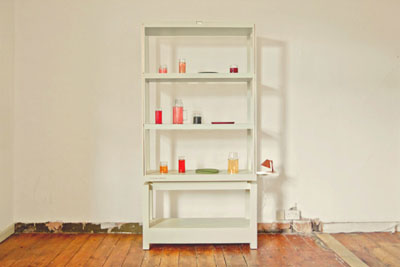The Energy Collection. Image courtesy of Marjan van Aubel's blog
A Dutch product designer called Marjan van Aubel has been playing around with solar cell technology to showcase how everyday objects gather energy from the light around us by creating a nifty solar glassware system she is hoping to bring to the marketplace one day.
Van Aubel has been collaborating with Michael Graetzel at the École Polytechnic Federale Lausanne (EPFL) in Switzerland, as well as Solaronix Lausanne in Switzerland and Imperial College London.
The ultimate aim is to develop and adapt her technologies to create a solar-powered glassware collection.
According to van Aubel, the solar cells are integrated into the objects to create a self-sufficient energy-harvesting system.
In her blog, she says that when you put one of her solar glasses away, a specially designed cabinet collects and stores energy itself.
“It’s a way to gather and harvest energy all within one room,” explains van Aubel. She says that the cabinet works as a battery.
“This power can be adapted in many ways, from charging your home to powering a light source,” claims van Aubel.
As for the glasses themselves that she has created, each one is lined on the inside with a photovoltaic layer of a dye synthesised solar cell.

Glassware Collection in its cabinet. Image courtesy of Marjan van Aubel’s blog
Van Aubel says this means that the properties of colour are being used to create an electric current. Apparently, this technology was invented by Graetzel.
The technique pioneered by Graetzel appears to be draw upon the act of photosynthesis in plants.
“Like the green chlorophyll which absorbs light energy, the colours in these cells collect energy,” explains van Aubel.
She says her glassware uses sunlight as a sustainable source of energy, but the glasses can also work under diffused light. This, says van Aubel, makes the glass more suitable for indoor use in the home in comparison to standard solar panels that only work in direct sunlight.
She adds that different colours in the glass represent different properties, with each colour having a unique wavelength to collect different currents.